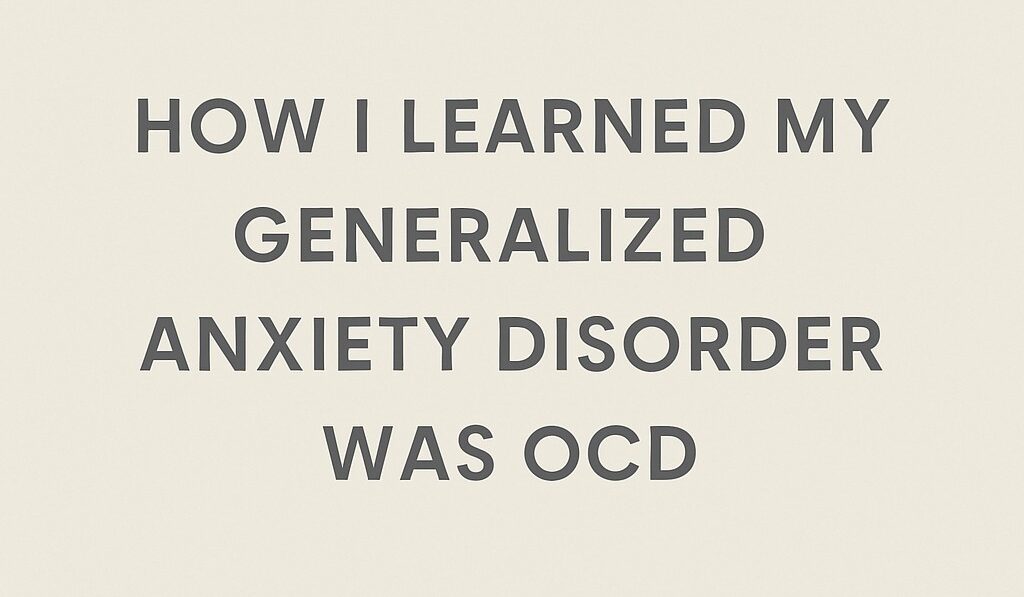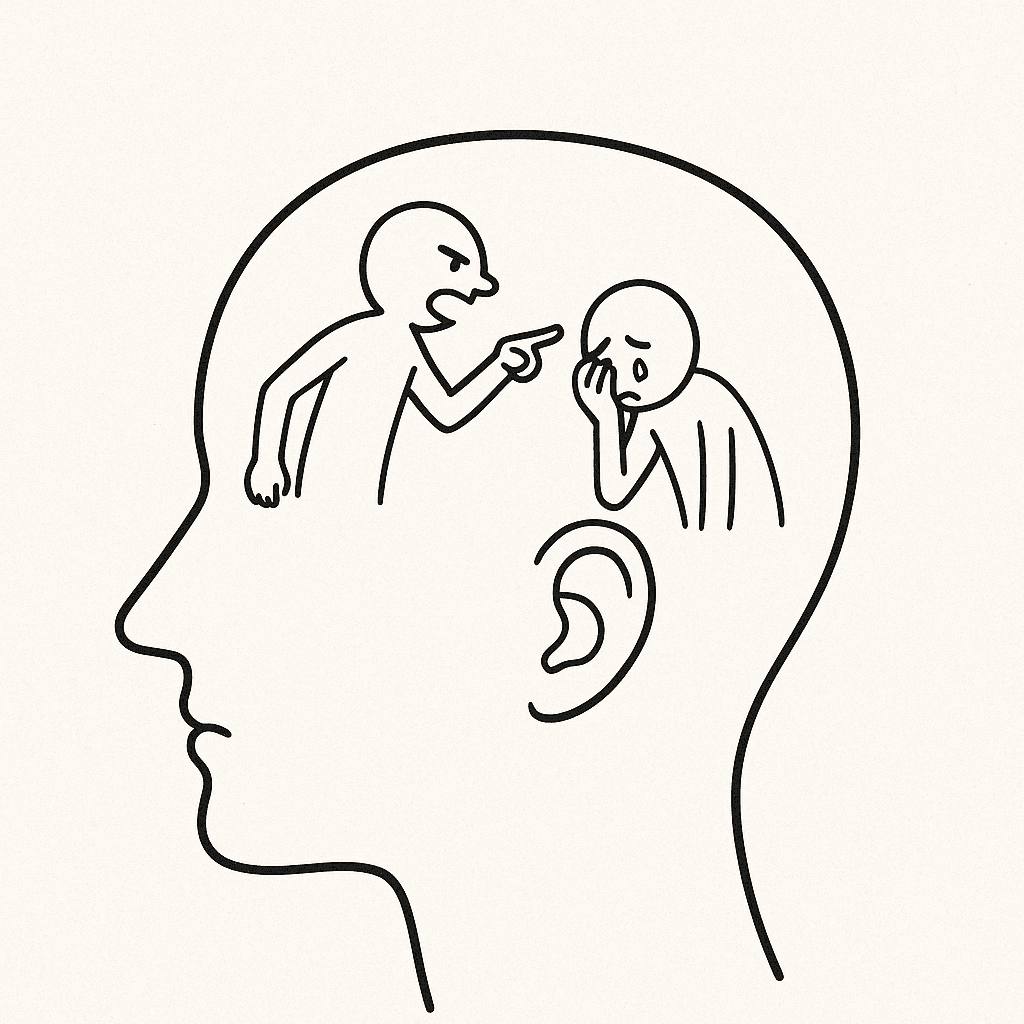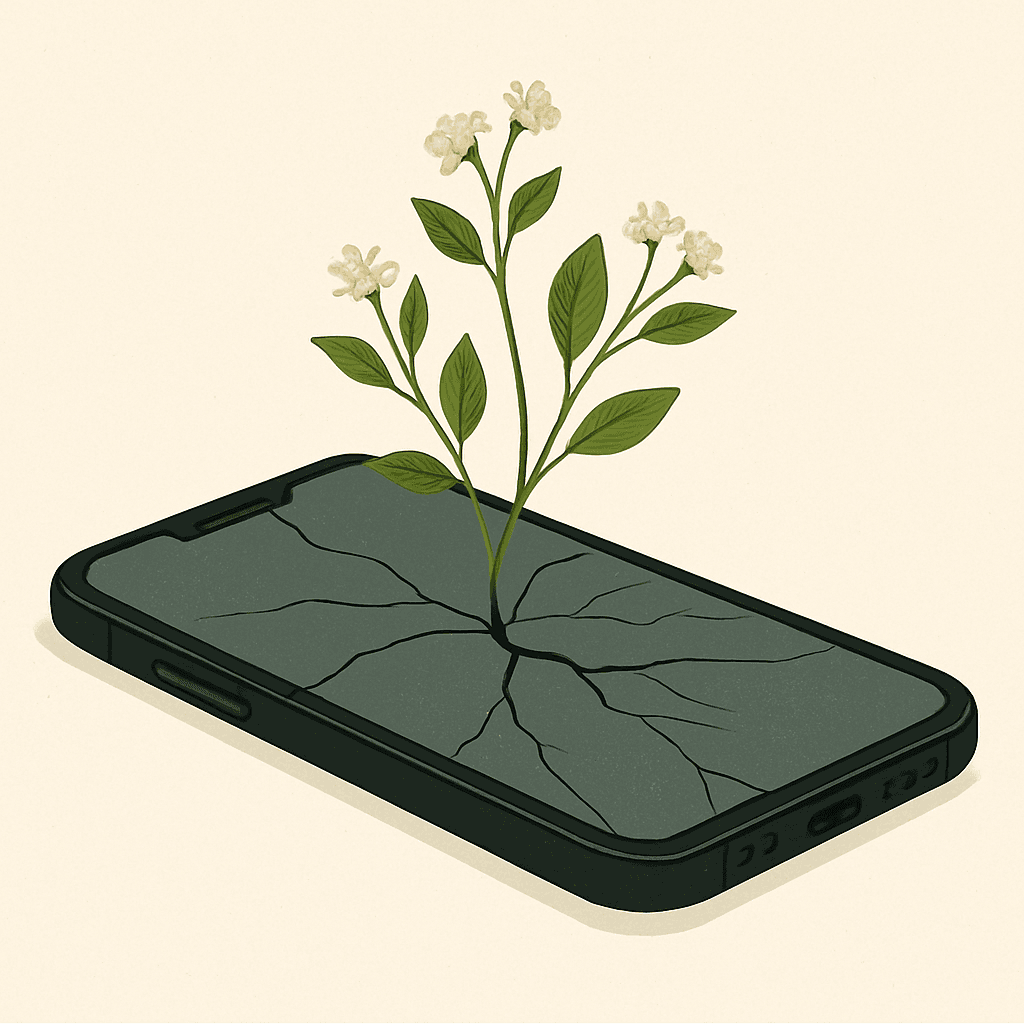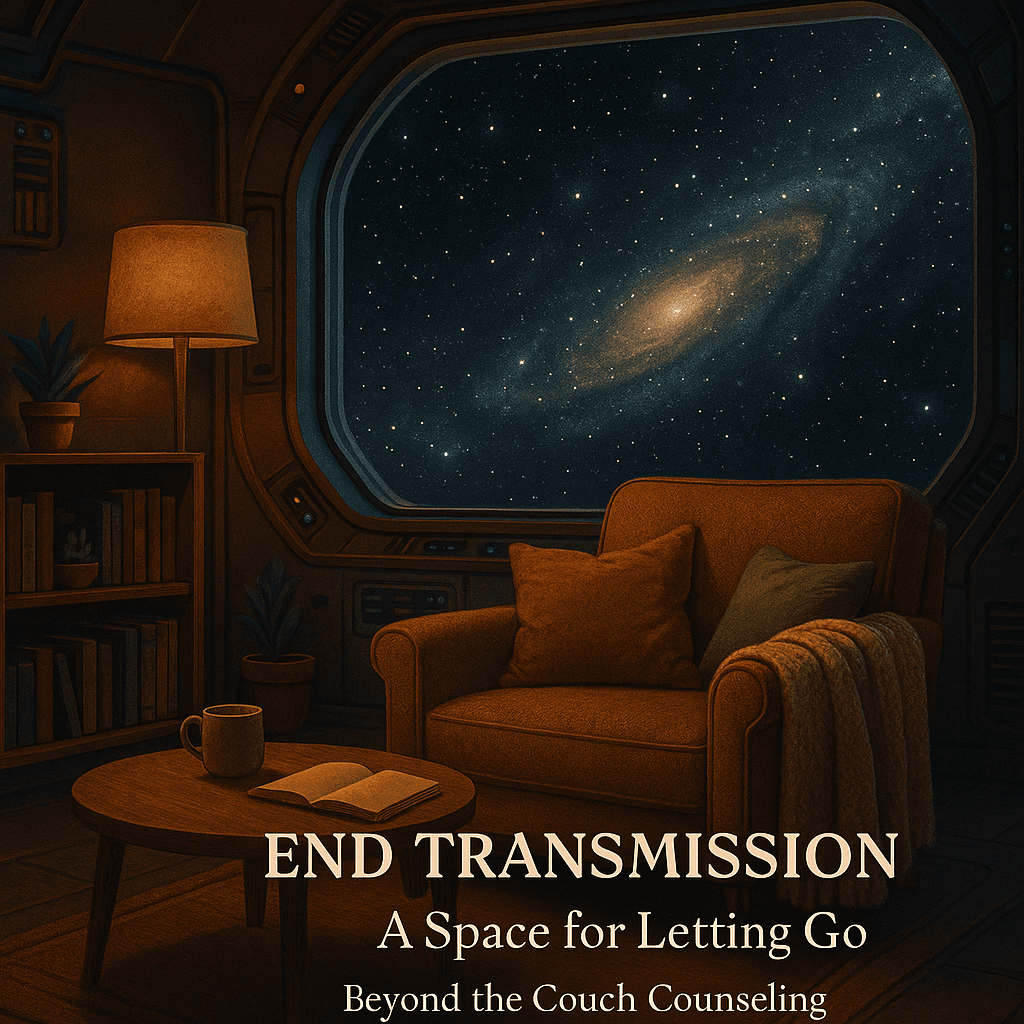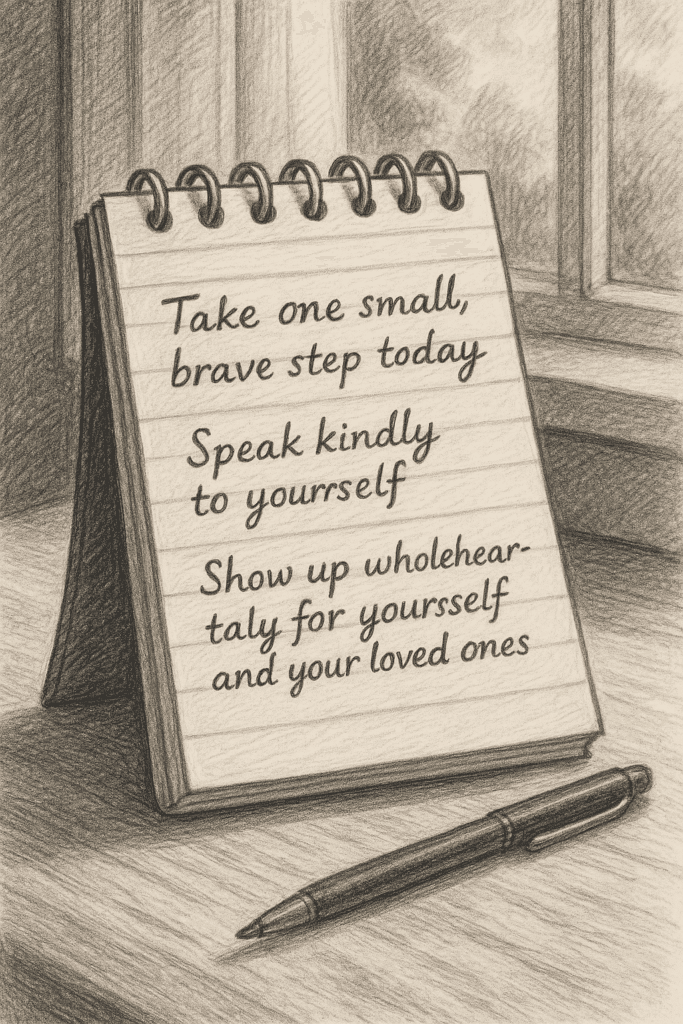Does This Fictional Client Sound Like You?
Meet Jordan.
Jordan isn’t a real person—but their story is one we hear all too often at Beyond the Couch Counseling in Grand Rapids, Michigan.
They’re high-functioning, emotionally intelligent, and deeply reflective. From the outside, everything looks fine. But inside? It’s a storm.
Jordan’s mind won’t stop spinning:
- “Did I offend my coworker when I said that?”
- “What if I forgot something important and someone gets hurt?”
- “What if I’m secretly a bad partner and just don’t know it?”
Every day is filled with fear—not about specific threats, but about what their thoughts might mean.
Therapists once labeled it Generalized Anxiety Disorder (GAD)—but after years of treatment that never quite stuck, Jordan began to realize: this was something else.
When “Anxiety” is Actually OCD
On the surface, Generalized Anxiety Disorder and Obsessive-Compulsive Disorder can look similar. Both involve chronic worry, tension, and efforts to manage uncertainty. But the driving force behind them is often very different.
GAD is typically rooted in realistic fears taken to an extreme. You worry about finances, health, family, or work, and the anxiety feels connected to everyday concerns.
OCD, on the other hand, often centers around ego-dystonic fears—deeply unwanted thoughts that feel intrusive and alien.
Examples include:
- “What if I’m attracted to something inappropriate?”
- “What if I harmed someone and don’t remember?”
- “What if I lose control and yell at my baby?”
What makes OCD especially confusing is that the compulsions can be internal:
- Mentally replaying scenarios
- Seeking reassurance
- Trying to “neutralize” a thought with another
- Avoiding people, places, or memories
That’s where Jordan found themselves. They weren’t just anxious. They were trapped in the OCD cycle.
The Gold Standard Treatment: ERP and ACT Together
At Beyond the Couch Counseling, our therapists use a powerful combination of Exposure and Response Prevention (ERP) and Acceptance and Commitment Therapy (ACT)—an evidence-based, research-supported duo that helps clients retrain their brain and reclaim their life.
What Is ERP?
Exposure and Response Prevention (ERP) is the most effective and widely studied treatment for OCD.
Here’s how it works:
- Exposure: You deliberately face the thought, image, or situation that triggers your anxiety (without avoiding or neutralizing it).
- Response Prevention: You resist the urge to do the compulsive behavior that usually follows (checking, seeking reassurance, ruminating, etc.)
Example:
If you’re afraid you offended someone, ERP means not texting them to check. Instead, you sit with the discomfort. Over time, your brain learns: “This feeling isn’t dangerous. I can survive it.”
Why Combine ERP with ACT?
ACT (Acceptance and Commitment Therapy) supercharges ERP by helping clients:
- Unhook from their thoughts instead of trying to disprove them
- Make space for uncomfortable feelings instead of avoiding them
- Take meaningful action based on their values, not their fears
While ERP rewires your behavioral response, ACT rewires your mental relationship to fear, guilt, and doubt.
Together, they create a full-spectrum treatment that addresses both the symptoms and the internal struggle.
Jordan’s Path to Healing (and Yours)
Let’s walk through the step-by-step process Jordan used—based on our work with clients right here in Grand Rapids, Michigan—to heal from misdiagnosed OCD.
Step 1: Learning to “Defuse” From Thoughts
ACT Skill: Cognitive Defusion
The Issue: Jordan believed every intrusive thought required a solution.
“If I don’t figure this out, I’ll stay stuck forever.”
The Practice: “Leaves on a Stream” Exercise
- Visualize a stream with leaves floating on it.
- Place each intrusive thought on a leaf and let it float away.
- Don’t analyze or argue—just notice and release.
✅ Result: You see thoughts as passing experiences, not absolute truths.
Step 2: Facing the Fear
ERP Skill: Exposure to Triggers
The Issue: Jordan avoided anything that might trigger obsessive spirals.
“What if I read something that plants a bad idea in my mind?”
The Practice: Planned Exposure
- Write a feared thought or situation (e.g., “Maybe I offended someone and didn’t apologize”).
- Read it aloud or write it repeatedly—without seeking reassurance or correcting it.
- Let the anxiety rise… and eventually fall.
✅ Result: You teach your brain: “This thought isn’t dangerous—and I don’t need to obey it.”
Step 3: Dropping the Struggle
ACT Skill: Acceptance of Internal Discomfort
The Issue: Jordan was terrified of feeling guilt, doubt, and shame.
The Practice: “Make Room” Exercise
- Name what you’re feeling: “This is guilt.”
- Place your hand on your body and breathe into it.
- Say: “I can feel this and choose what matters to me.”
✅ Result: You stop avoiding emotion—and start building tolerance and resilience.
Step 4: Resisting Compulsions
ERP Skill: Response Prevention
The Issue: Jordan constantly mentally checked if they were a “good person.”
The Practice: Ride the Urge
- When the urge to check or ruminate arises, name it: “That’s the urge to check.”
- Sit still. Set a timer for 10 minutes.
- Let the urge exist without acting on it.
✅ Result: You break the link between discomfort and compulsive behavior.
Step 5: Reclaiming Life Through Values
ACT Skill: Committed Action
The Issue: Jordan’s world had become small. Avoidant. Drained of joy.
The Practice: Values-Based Planning
- List 3 values (e.g., connection, creativity, honesty).
- Write down one small action aligned with each value.
- Do the action—even if you’re afraid.
✅ Result: You live by what matters—not by what fear tells you.
The Turning Point
Through the ACT + ERP process, Jordan didn’t just “cope” better.
They stopped:
- Obsessing over whether they were “good enough”
- Checking, avoiding, and seeking reassurance
- Letting OCD decide how their day would go
And they started:
- Laughing with their partner again
- Enjoying uncertainty instead of fearing it
- Making peace with thoughts, emotions, and their own beautifully imperfect humanity
Could This Be You?
Have you been told you have GAD—but still feel trapped by:
- Persistent intrusive thoughts that don’t align with your values?
- Mental loops that feel like life-or-death puzzles?
- Shame and guilt that show up out of nowhere?
- A need to “figure it all out” before you can rest?
You’re not alone.
You’re not broken.
And you’re not stuck.
This might be OCD. And it’s highly treatable.
Get Expert Help for OCD in Grand Rapids
At Beyond the Couch Counseling, we specialize in helping people like you:
- Break free from years of misdiagnosis
- Understand the real mechanics of OCD
- Build emotional flexibility, resilience, and freedom
We provide ERP and ACT therapy for OCD in Grand Rapids—serving West Michigan in person and throughout Michigan via Telehealth.
Let’s Start Together
📍 Local to Grand Rapids?
💻 Prefer virtual sessions?
Either way, we’re ready to help.
📧 Contact us at admin@beyondthecouchcounseling.com
🌐 Visit: www.beyondthecouchcounseling.com
You don’t have to solve every thought.
You just have to learn how to stop obeying them.
If you liked this, check out our article on Metacognitive Interventions for managing intrusive thoughts.

